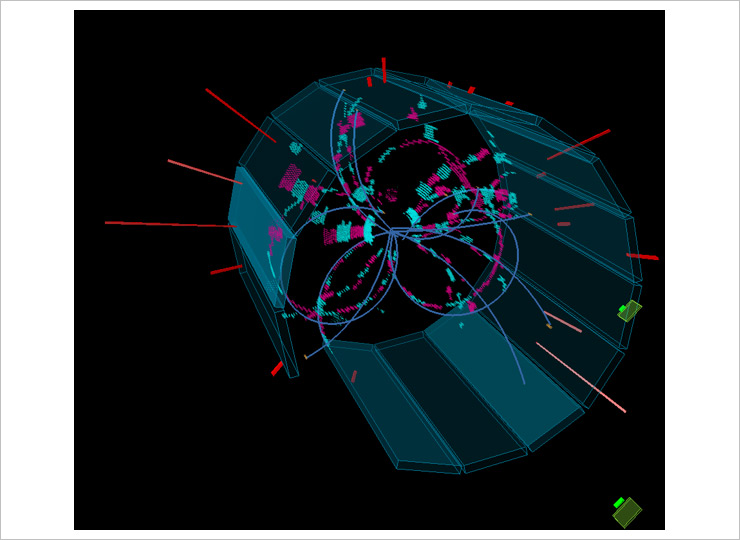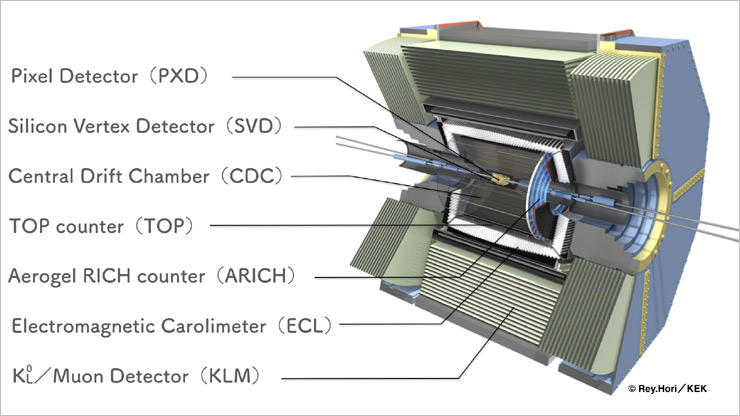Electrons and Positrons Collide for the first time in the SuperKEKB Accelerator
World science, 28 April 2018
Electrons and positrons accelerated and stored by the SuperKEKB particle accelerator collided for the first time on 26 April 2018 0:38, GMT+09:00 at KEK in Tsukuba, Japan. The Belle II detector, installed at the collision point, recorded events from electron-positron annihilation (matter-antimatter annihilation) of the beam particles, which produced other particles likely including beauty quark and anti-beauty quark pairs as well as other hadronic and Bhabha scattering events1. These are the first electron-positron collisions at the KEK particle physics laboratory in 8 years; the previous KEKB particle collider ceased its operations in 2010.
 One of the first events in the Belle-II detector. Image © Belle-II Collaboration
One of the first events in the Belle-II detector. Image © Belle-II Collaboration
The Belle II detector at SuperKEKB was designed and built by an international collaboration of over 750 researchers from 25 countries and regions. Compared to Belle, the detector for the previous experiment, Belle II has dramatically improved capabilities and can detect and reconstruct events at much higher rates provided by the 40 times higher luminosity2 of SuperKEKB. A dataset of about 50 billion B anti-B meson pair production events, which is 50 times larger than the entire data sample of the KEKB/Belle project, will be accumulated in about 10 years of operation.
SuperKEKB, along with the Belle II detector, is a facility designed to search for New Physics beyond the Standard Model by measuring rare decays of elementary particles such as beauty quarks, charm quarks, and tau leptons. Belle II will tackle the problem of finding evidence of the existence of new particles, a new possible reason why matter is dominant compared with antimatter and answer other open fundamental questions in understanding the universe.
 The Belle II detector. Image © www.kek.jp
The Belle II detector. Image © www.kek.jp
Last month, KEK began a new stage of operation of the SuperKEKB electron Embargo: For Release 7:00am JPT (GMT+9:00), April 26, 2018 positron collider, with a brand new positron damping ring, a new extremely complex system of superconducting final focusing magnets, and the Belle II detector in place at the interaction point. A beam of electrons was successfully stored for the first time in the main high energy ring on March 21st. A beam of positrons was also successfully stored in the main low energy ring on March 31st. Since then, final accelerator tuning of the two beams for collisions at the center of Belle II has continued for several weeks.
In contrast to the LHC at CERN in Geneva, Switzerland, which is the worldʼs highest energy proton accelerator, SuperKEKB/Belle II is designed to have the worldʼs highest luminosity. SuperKEKB is the leading accelerator on the “luminosity frontier”. Background information on the science goals of the SuperKEKB/Belle II facility is available on the Belle II public web page: belle2.jp